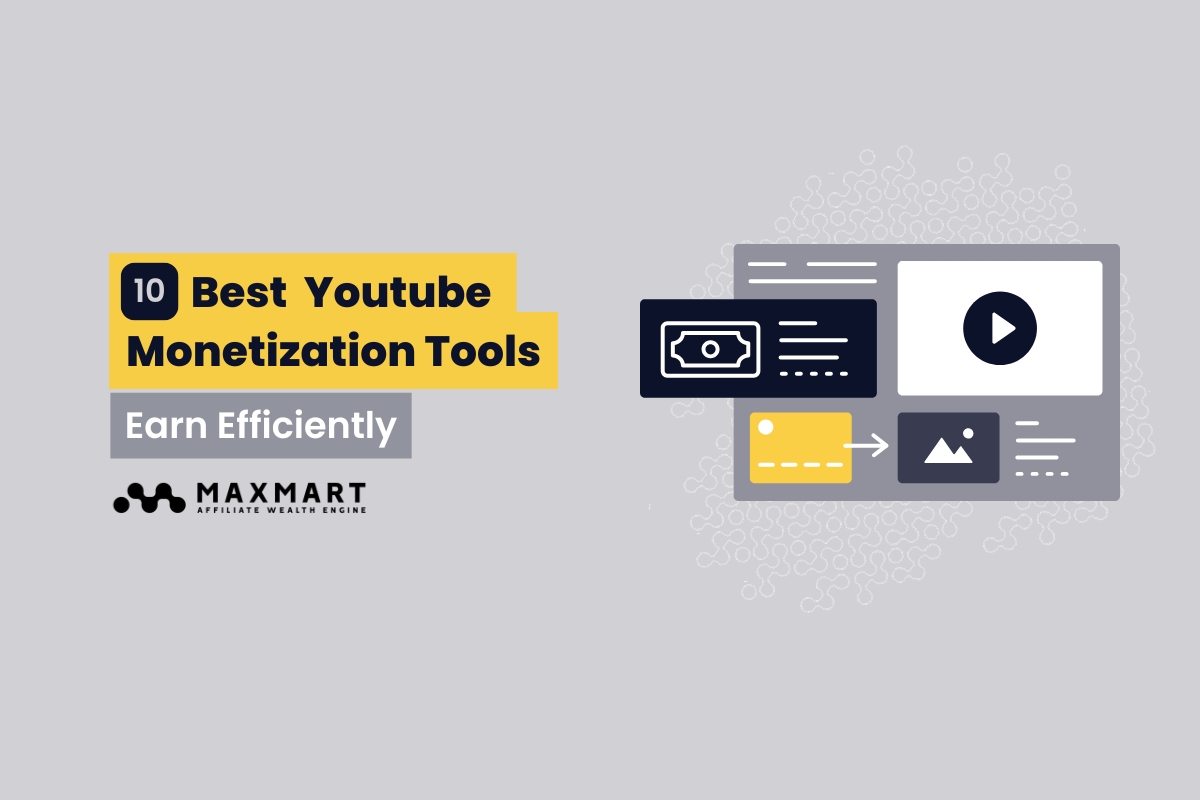With countless creators now making serious money online, you might wonder how to start maximizing your earnings on YouTube. Luckily, today’s creators have more options than ever. From traditional ad revenue to memberships, crowdfunding, and affiliate programs, there are diverse ways to build a sustainable income stream.
In this post, we’ll explore the top YouTube monetization tools available in 2024. Whether you’re just starting out or aiming to expand your revenue sources, this guide offers a breakdown of some powerful tools that can help you generate income from your content and engage your audience like never before.
What are YouTube Monetization Tools?
YouTube monetization tools are platforms and features that enable creators to earn income from their content. These tools offer various revenue streams beyond traditional ad revenue, allowing creators to diversify their income and engage more deeply with their audience.
For instance, Google AdSense integrates with YouTube to display ads on videos, providing a primary income source for many creators. Patreon and Ko-fi are platforms that facilitate fan funding, enabling viewers to support creators through subscriptions or one-time donations. Affiliate marketing programs like Amazon Associates and ShareASale allow creators to earn commissions by promoting products relevant to their audience.
YouTube also offers built-in monetization features such as Channel Memberships, Super Chat, and Super Stickers, which enhance viewer engagement and provide additional income avenues. Merchandise Shelf enables creators to sell branded products directly through their channel. Crowdfunding platforms like Kickstarter and Fourthwall assist in funding specific projects or product launches.
Additionally, influencer marketing platforms like Izea connect creators with brands for sponsored content opportunities, while Uscreen allows creators to sell on-demand video content through a subscription model.
Do You Need YouTube Monetization Tools to Start Out?
No, you don’t need YouTube monetization tools to start out, but they can greatly enhance your earning potential as your channel grows. In the beginning, many creators focus on building their audience and refining their content. Monetization tools become more impactful once you have a dedicated viewership that’s interested in supporting your channel.
Starting without these tools allows you to focus on creating valuable, engaging content that naturally attracts viewers. As your audience grows, adding YouTube monetization tools can help you:
- Generate Revenue: By adding ads, fan support, or memberships, you can turn your passion into a potential income source.
- Diversify Earnings: Monetization tools allow you to explore multiple income streams, like ad revenue, memberships, and product sales, reducing reliance on any one source.
- Enhance Viewer Engagement: Many tools, like Super Chat and Channel Memberships, encourage your audience to connect more closely with you, strengthening community ties.
10 Best YouTube Monetization Tools to Increase Channel Revenue
Now that we’ve covered the basics of YouTube monetization tools and when to consider them, let’s dive into the top tools available in 2024. Each of these options offers unique ways to generate income, engage with your audience, and build a sustainable content-creation career. Here’s a closer look at how each tool can help you maximize your channel’s earning potential.
1. Google AdSense

Google AdSense is a free advertising program that allows online publishers to earn money by displaying third-party Google ads on their sites.
As part of the broader spectrum of YouTube monetization options, AdSense lets creators receive revenue based on ad impressions or clicks. Through AdSense, businesses pay to advertise, and site owners get a share of that revenue.
Pros:
- Ease of Use: AdSense is known for its user-friendly interface, making it ideal for beginners in YouTube monetization. Once approved, you can start displaying ads almost immediately, with Google handling most of the setup and management.
- Large Advertiser Network: AdSense connects you with a vast network of advertisers, increasing the likelihood of displaying relevant ads that resonate with your audience.
- Customization Options: You can adjust ad formats and placements to fit your website’s design, providing a seamless experience for users.
Cons:
- Revenue Variability: Earnings fluctuate based on traffic, niche, and advertiser demand. High traffic is typically needed to earn a substantial income through YouTube monetization.
- Account Suspension Risks: Violating AdSense policies, even unintentionally, can result in account suspension and loss of income.
- Payout Threshold: AdSense requires reaching a $100 minimum threshold before issuing payments, which may be challenging for smaller sites.
Verdict:
Google AdSense is an excellent option for those starting out with YouTube monetization. Its ease of use and broad advertiser access make it appealing, but driving significant traffic and adhering to policies are essential for maximizing earnings.
Pricing:
- Free to Use: Joining and using Google AdSense is free, with payment based on ad clicks or impressions displayed on your site.
2. Patreon
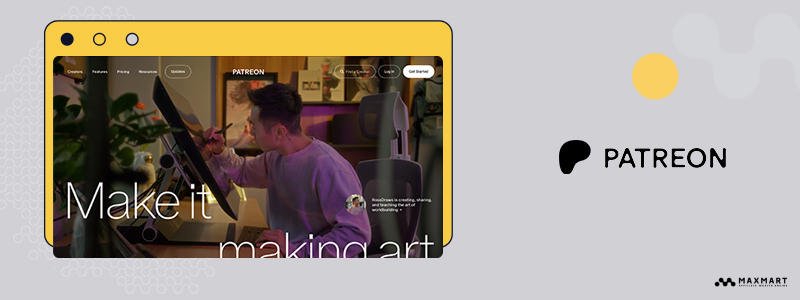
Patreon is a membership platform that enables creators to generate income through subscriptions from fans, known as patrons, by offering exclusive content and experiences.
This model of YouTube monetization allows creators to build a sustainable income stream directly from their most loyal supporters, making it a popular choice for creators seeking consistent earnings.
Pros:
- Direct Support from Fans: Patreon fosters a direct financial relationship between creators and fans, promoting community and loyalty. It’s an effective YouTube monetization strategy for creators seeking to deepen audience engagement.
- Flexible Membership Tiers: Creators can set up multiple subscription levels with different perks, allowing patrons to choose a support level that fits their budget and interests.
- Diverse Content Hosting: Patreon supports various content types, from videos and podcasts to live streams and written posts, making it adaptable to different creative fields.
Cons:
- Platform Fees: Patreon charges a percentage of earnings, which can reduce overall income, especially for newer creators.
- Payment Processing Fees: Beyond platform fees, Patreon deducts payment processing fees from earnings, impacting net revenue.
- Content Exclusivity Requirement: To provide value for patrons, creators often produce exclusive content, which can be time-consuming and may reduce free content availability to a wider audience.
Verdict:
Patreon is a highly effective tool for YouTube monetization, especially for creators looking to build a dedicated fan base and establish recurring income. Its flexible membership and diverse content hosting options make it suitable for various creator needs, though fees and the commitment to exclusive content should be considered.
Pricing:
- Lite: 5% platform fee; includes a hosted creator page and communication tools.
- Pro: 8% platform fee; includes membership tiers, analytics, and promotional tools.
- Premium: 12% platform fee; includes all Pro features, plus a dedicated YouTube partner program manager and team accounts.
3. Amazon Associates
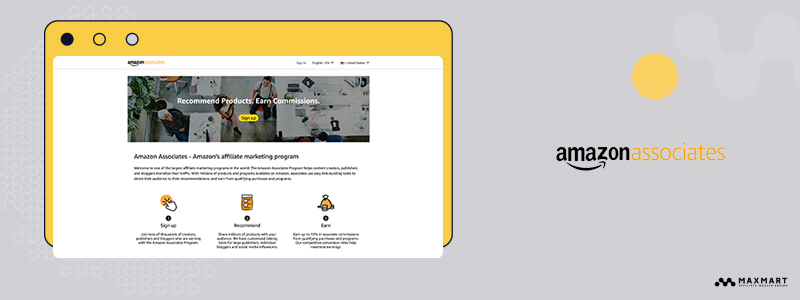
Amazon Associates is Amazon’s affiliate marketing program, enabling content creators, bloggers, and website owners to earn commissions by promoting Amazon products.
As a YouTube monetization tool, Amazon Associates allows creators to earn revenue by sharing customized affiliate links to products they recommend, with commissions paid on qualifying purchases made through these referrals.
Pros:
- Vast Product Selection: With millions of items in various categories, Amazon Associates affiliates can find products that align with their niche, increasing relevance and conversion rates, which is advantageous for YouTube monetization.
- Trusted Brand: Amazon’s reputation and global reach help boost conversion rates, as users are more likely to purchase from a familiar, trusted retailer.
- User-Friendly Tools: Amazon Associates provides tools like SiteStripe, allowing affiliates to create affiliate links directly from product pages, simplifying the process.
Cons:
- Variable Commission Rates: Commissions vary by product category and are typically lower than other affiliate programs, ranging from 1% to 10%.
- Short Referral Window: Amazon’s 24-hour referral window means commissions are only earned if purchases are made within a day of clicking the affiliate link, which can limit earnings for creators relying on YouTube monetization through long-term product recommendations.
- Strict Compliance Requirements: Amazon’s strict policies require careful adherence, as violations can lead to account termination and loss of earnings.
Verdict:
Amazon Associates is a valuable tool for YouTube monetization, particularly for creators new to affiliate marketing. Its extensive product selection and Amazon’s brand credibility enhance its effectiveness, though lower commission rates and a short referral window require consideration. Maintaining compliance with Amazon’s guidelines is essential to ensure long-term earnings.
Pricing:
- Free to Join: Amazon Associates is free to join, with earnings based on a percentage of sales generated through affiliate links. Commission rates vary by product category.
4. Ko-fi

Ko-fi is a platform that allows creators to receive financial support from their audience through donations, memberships, and sales of digital or physical products. For YouTube monetization, Ko-fi provides a user-friendly way for creators to set up a page quickly and begin earning without complex setups.
By enabling donations and real-time interactions, Ko-fi serves as a valuable tool for YouTube creators looking to engage with supporters directly.
Pros:
- Flexible Monetization Options: Ko-fi supports one-time donations, recurring memberships, and a shop feature, giving YouTube creators multiple ways to earn income and diversify their YouTube monetization strategy.
- Low Fees: The platform charges a 0% fee on donations, with an optional 5% fee for additional features, allowing creators to retain a larger portion of their earnings.
- Streaming Integration: Ko-fi offers stream alerts compatible with platforms like YouTube and Twitch, enabling creators to receive real-time notifications for donations during live streams, enhancing engagement with supporters.
Cons:
- Limited Discoverability: Unlike some other monetization tools, Ko-fi does not have a built-in audience discovery feature, so creators need to promote their Ko-fi page to their existing audience actively.
- Basic Analytics: Ko-fi’s analytics are limited compared to other YouTube monetization platforms, potentially hindering creators’ ability to analyze supporter behavior in depth.
Verdict:
Ko-fi is an excellent choice for YouTube creators seeking a straightforward and flexible way to monetize their content. With low fees and multiple income options, it’s appealing for creators just starting or looking to expand their YouTube monetization avenues.
However, creators should actively promote their Ko-fi page to fully realize its potential.
Pricing:
- Free Plan: 0% platform fee on donations; 5% fee on shop sales and commissions.
- Ko-fi Gold: $6 per month or $60 per year; 0% platform fee on all transactions, plus additional features like custom branding and analytics.
5. Channel Memberships
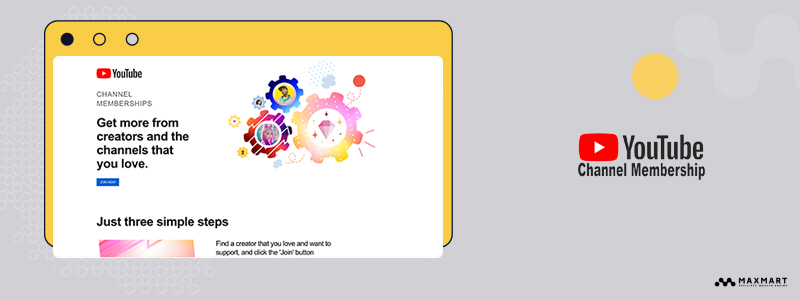
YouTube Channel Memberships allow creators to generate recurring revenue by offering exclusive perks to subscribers who pay a monthly fee. As part of the YouTube monetization ecosystem, this feature lets creators build a closer connection with their audience while earning a consistent income stream.
By providing access to members-only content, Channel Memberships give viewers a unique way to support their favorite creators.
Pros:
- Recurring Revenue Stream: Channel Memberships provide creators with steady monthly income, as members pay for access to exclusive content, enhancing the stability of YouTube monetization.
- Enhanced Audience Engagement: By offering perks like custom badges, emojis, and members-only posts, creators can build a sense of community and loyalty among subscribers, fostering a stronger connection.
- Integrated Platform: Since Channel Memberships are built into YouTube, creators can manage memberships without external tools, ensuring a seamless experience for both creators and subscribers.
Cons:
- Eligibility Requirements: Not all creators can access Channel Memberships immediately. Eligibility includes having at least 1,000 subscribers and being part of the YouTube Partner Program, which may be a barrier for newer creators.
- Revenue Sharing: YouTube takes a 30% share of membership revenue, which may be higher than the fees on some other monetization of YouTube platforms.
- Content Commitment: To retain members, creators need to regularly provide exclusive content, which can require additional time and resources.
Verdict:
YouTube Channel Memberships are an effective tool for creators looking to monetize their content directly on YouTube.
The exclusive perks boost audience engagement and loyalty, making it a valuable addition to YouTube monetary strategies. However, creators should be ready to meet eligibility requirements and commit to consistent content for their members.
Pricing:
- Multiple Membership Levels: Creators can set different price points for membership tiers, varying by country. YouTube retains 30% of the membership revenue, with the remaining 70% going to the creator.
6. ShareASale
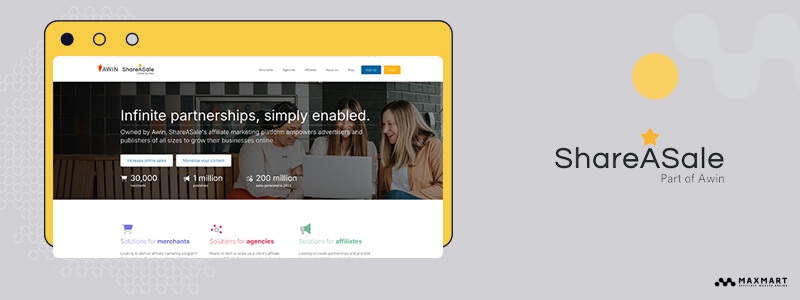
ShareASale is a prominent affiliate marketing network that connects merchants with affiliates to promote products and services. For creators exploring YouTube monetization, ShareASale offers a way to earn commissions by partnering with a wide range of brands and sharing affiliate links.
Through its extensive merchant network, ShareASale provides monetization opportunities suited for various content types.
Pros:
- Extensive Merchant Network: With over 6,500 merchants in various niches, ShareASale allows YouTube creators to find products aligned with their content and audience, making it a versatile option for YouTube monetization.
- User-Friendly Interface: ShareASale’s platform includes tools to create custom affiliate links, track performance, and access reports, simplifying affiliate marketing for both beginners and seasoned marketers.
- Reliable Payments: ShareASale offers consistent and timely payouts, ensuring that creators receive their earnings without delays, a valuable feature for building stable income through YouTube monetization.
Cons:
- Approval Process: Each merchant sets its own criteria for affiliate approval, so creators may not be accepted into every program they apply for, potentially limiting available partnerships.
- Variable Commission Rates: Commission rates and cookie durations differ by merchant, requiring creators to review program terms carefully to optimize their earnings.
- Learning Curve: New users may need time to familiarize themselves with the platform’s features and strategies to maximize affiliate marketing effectiveness.
Verdict:
ShareASale is a powerful platform for YouTube creators seeking to expand their income through affiliate marketing. With its extensive merchant network and intuitive tools, it supports diverse YouTube monetization strategies.
However, creators should be prepared for varying approval processes and to study commission structures to fully benefit.
Pricing:
- Free to Join: There are no fees for affiliates to join ShareASale. Earnings are based on commissions from sales generated through affiliate links.
7. Kickstarter

Kickstarter is a crowdfunding platform that enables creators to raise funds for a wide variety of projects, including art, technology, and media. For YouTube monetization, Kickstarter offers creators the chance to secure financial support from a global audience, helping bring unique ideas to life while maintaining full creative control. By presenting ideas to the public, creators gain valuable feedback and potential backers.
Pros:
- Access to a Global Audience: Kickstarter connects creators with a vast, international audience, enhancing exposure and the likelihood of funding success, making it a beneficial addition to YouTube monetization strategies for project-based content.
- Market Validation: The platform allows creators to gauge public interest and support before committing to full-scale production, providing insight into the viability of their ideas.
- Creative Control: Creators retain full ownership and control over their projects, so they don’t need to give up equity or decision-making power, a significant advantage compared to other YouTube monetization options.
Cons:
- All-or-Nothing Funding Model: Kickstarter’s model means that if a project doesn’t meet its funding goal, creators receive no funds, which can be challenging for new projects.
- Platform Fees: Kickstarter takes a 5% fee on funds from successfully funded projects, along with additional payment processing fees, which may impact the total earnings.
- High Competition: Numerous projects on Kickstarter make standing out challenging, and attracting backers requires careful planning and promotion.
Verdict:
Kickstarter is an excellent option for creators looking to fund innovative projects through YouTube monetization. Its all-or-nothing model promotes detailed planning and strong promotional efforts.
However, creators should be prepared for high competition and aware of the fees associated with successful funding.
Pricing:
- Platform Fee: 5% of total funds raised for successfully funded projects.
- Payment Processing Fees: Around 3% to 5% per pledge, depending on pledge amount.
8 . Fourthwall

Fourthwall is an all-in-one platform designed to empower creators by offering tools to build branded websites, sell merchandise, offer memberships, and engage directly with their audience.
As a versatile YouTube monetization tool, Fourthwall allows creators to consolidate various revenue streams under one platform, enabling them to focus on content creation while Fourthwall handles technical aspects and integrations.
Pros:
- Comprehensive Creator Tools: Fourthwall provides features like customizable websites, merchandise stores, and membership options, allowing creators to manage multiple income sources, making it a valuable addition to YouTube monetization strategies.
- No Upfront Costs: Operating on a commission-based model, Fourthwall eliminates monthly fees, minimizing financial risk for creators just starting out.
- Seamless Integration: Fourthwall integrates with platforms like YouTube and Twitch, allowing creators to sync content and reach their audience directly, further enhancing the YouTube monetization experience.
Cons:
- Eligibility Requirements: Some features may require creators to meet specific criteria, like a minimum number of subscribers, which could limit access for newer creators.
- Learning Curve: Due to its comprehensive toolset, new users might need time to familiarize themselves with Fourthwall’s features to fully utilize its capabilities.
Verdict:
Fourthwall is a robust choice for creators seeking to establish and monetize their online presence across multiple channels. With its extensive features and seamless integration, it suits both beginners and experienced creators looking to expand YouTube monetization avenues.
However, understanding the platform’s tools and meeting any eligibility requirements are crucial for optimal use.
Pricing:
- Physical Products: No platform fees; creators set their own margins.
- Digital Products: 3% platform fee.
- Memberships: 5% platform fee.
9. Izea
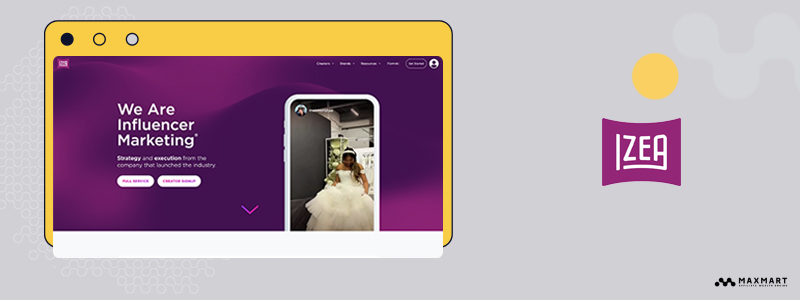
IZEA is a pioneering influencer marketing platform that connects creators with brands for sponsored content opportunities. As part of the broader landscape of YouTube monetization, IZEA enables creators to earn by collaborating with brands on sponsored posts, helping them grow their income and reach within the influencer marketing space.
With a well-established presence since 2006, IZEA has shaped influencer marketing by providing the tools and support creators need for effective brand partnerships.
Pros:
- Diverse Opportunities: IZEA connects creators with a wide range of brands across multiple industries, broadening options for YouTube monetization through sponsored content.
- User-Friendly Platform: With an intuitive interface, IZEA simplifies the process of finding and applying for sponsorships, making it accessible for creators of various experience levels.
- Comprehensive Support: IZEA offers resources and support to help creators optimize collaborations and maximize their earning potential, further enhancing their YouTube monetization strategy.
Cons:
- Competitive Environment: With a large pool of creators, securing high-paying sponsorships can be competitive, requiring creators to consistently produce quality content to stand out.
- Platform Fees: IZEA charges a service fee on each transaction, impacting overall earnings from sponsored collaborations.
- Approval Process: Some sponsorships may have specific eligibility requirements or approval processes, limiting opportunities for newer creators.
Verdict:
IZEA is an excellent platform for creators seeking to monetize their content through brand collaborations, making it a valuable addition to YouTube monetization options. Its diverse network of brands and user-friendly tools are ideal for those looking to grow within influencer marketing.
However, creators should be mindful of the platform’s competitive nature and transaction fees.
Pricing:
- Free to Join: Creators can sign up and access IZEA without any initial costs.
- Service Fees: IZEA charges a service fee on each transaction, which varies based on the specific collaboration and agreement terms.
10. Uscreen
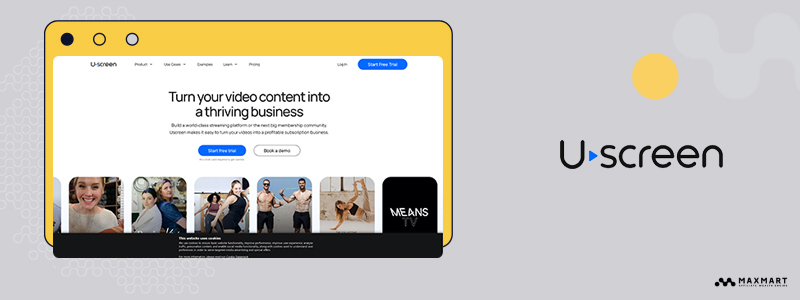
Uscreen is an all-in-one video monetization platform that allows creators to launch branded video streaming services. Designed to support YouTube monetization through various content formats, Uscreen provides hosting, distribution, and monetization tools for a sustainable business model around video content.
This platform empowers creators to manage subscriptions, rentals, and one-time purchases, offering flexibility for different revenue strategies.
Pros:
- Comprehensive Monetization Options: Uscreen supports multiple revenue models, including subscriptions, rentals, and one-time purchases, giving creators diverse YouTube monetization options to reach their audience effectively.
- Branded OTT Apps: Creators can launch their own mobile and TV apps, providing a seamless viewing experience across devices and enhancing brand visibility.
- Community Engagement Tools: Uscreen includes live streaming and community spaces, fostering deeper connections with the audience, an essential component of a successful YouTube monetization strategy.
Cons:
- Pricing Structure: Uscreen’s pricing plans can be expensive, especially for small-scale creators, and additional costs for features may be a barrier for those just starting out.
- Video Storage Limits: The platform has storage limits based on the selected plan, which could restrict creators with extensive content libraries.
- Learning Curve: While feature-rich, Uscreen may require new users to invest time in learning the platform to utilize its full potential effectively.
Verdict:
Uscreen is a robust choice for creators looking to monetize their video content with a dedicated streaming service. Its extensive features, community tools, and customization options make it ideal for established creators seeking to expand their brand and explore new avenues for YouTube monetization.
However, high costs and storage limitations may be drawbacks for creators in the early stages.
Pricing:
- Growth: $149 per month plus $1.99 per paid member per month; includes features like a video catalog, live streaming up to 1 hour, community access, and a mobile app.
- Pro: $499 per month plus $1.49 per paid member per month; offers additional features like extended live streaming, member and content migrations, shoppable videos, and Zapier integrations.
- Plus: Custom pricing; designed for established creators needing full brand control, including mobile and TV apps, custom live stream packages, and API access.
Conclusion
In conclusion, the variety of YouTube monetization tools available in 2024 empowers creators to earn from their content in diverse ways, from memberships and sponsored content to affiliate marketing and dedicated streaming services.
Choosing the right tool depends on your audience, content type, and goals, whether you’re looking for direct fan support, brand partnerships, or expanding your video platform.
MaxMart is committed to helping creators like you build a strong online presence and drive meaningful traffic to your content. Our resources provide comprehensive guidance on getting started online, selecting the right domain tools and website tools, and mastering SEO. Through detailed information on SEO tools and resources, MaxMart equips you with the insights and support needed to maximize your online impact and grow sustainably in the digital landscape.

